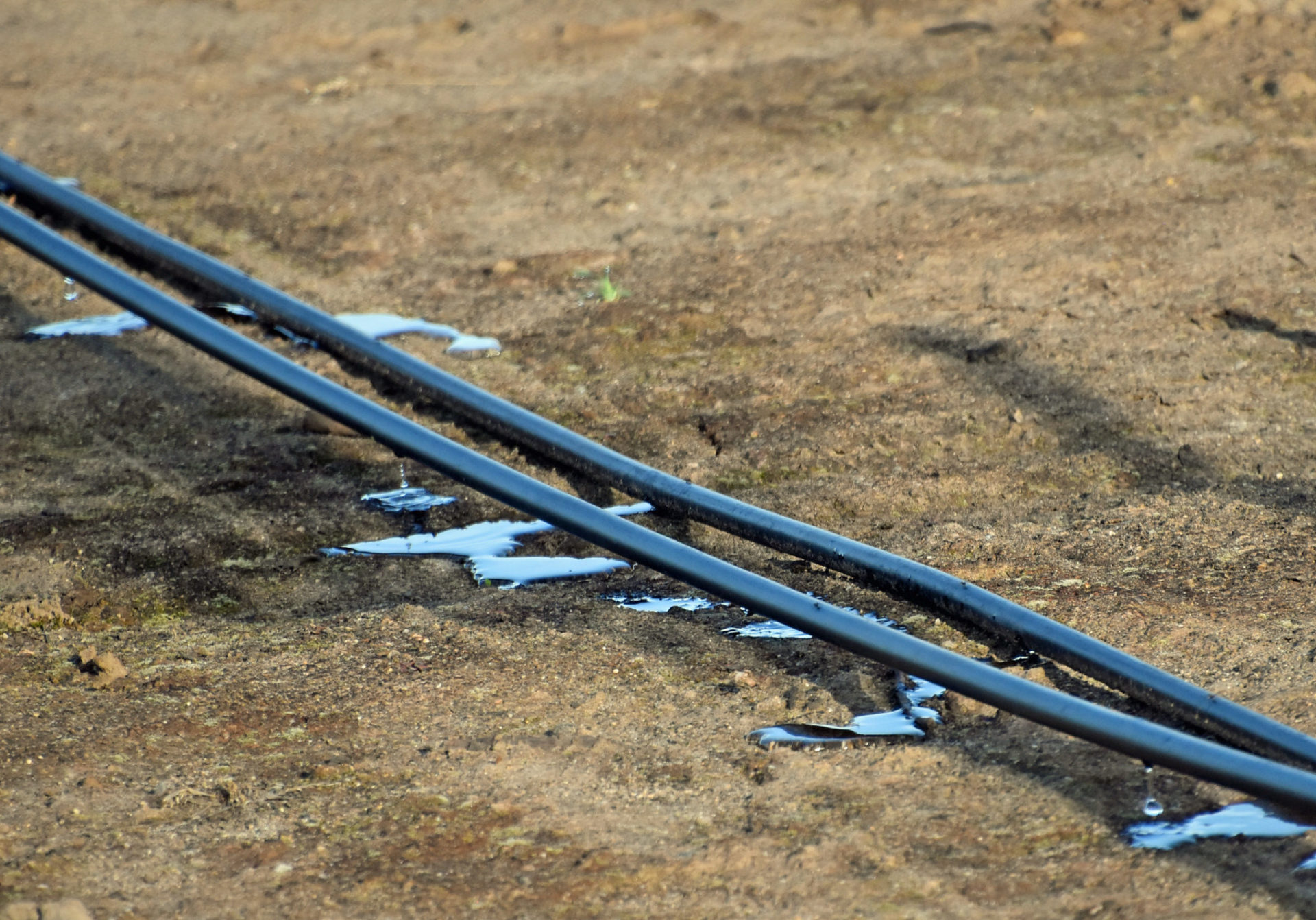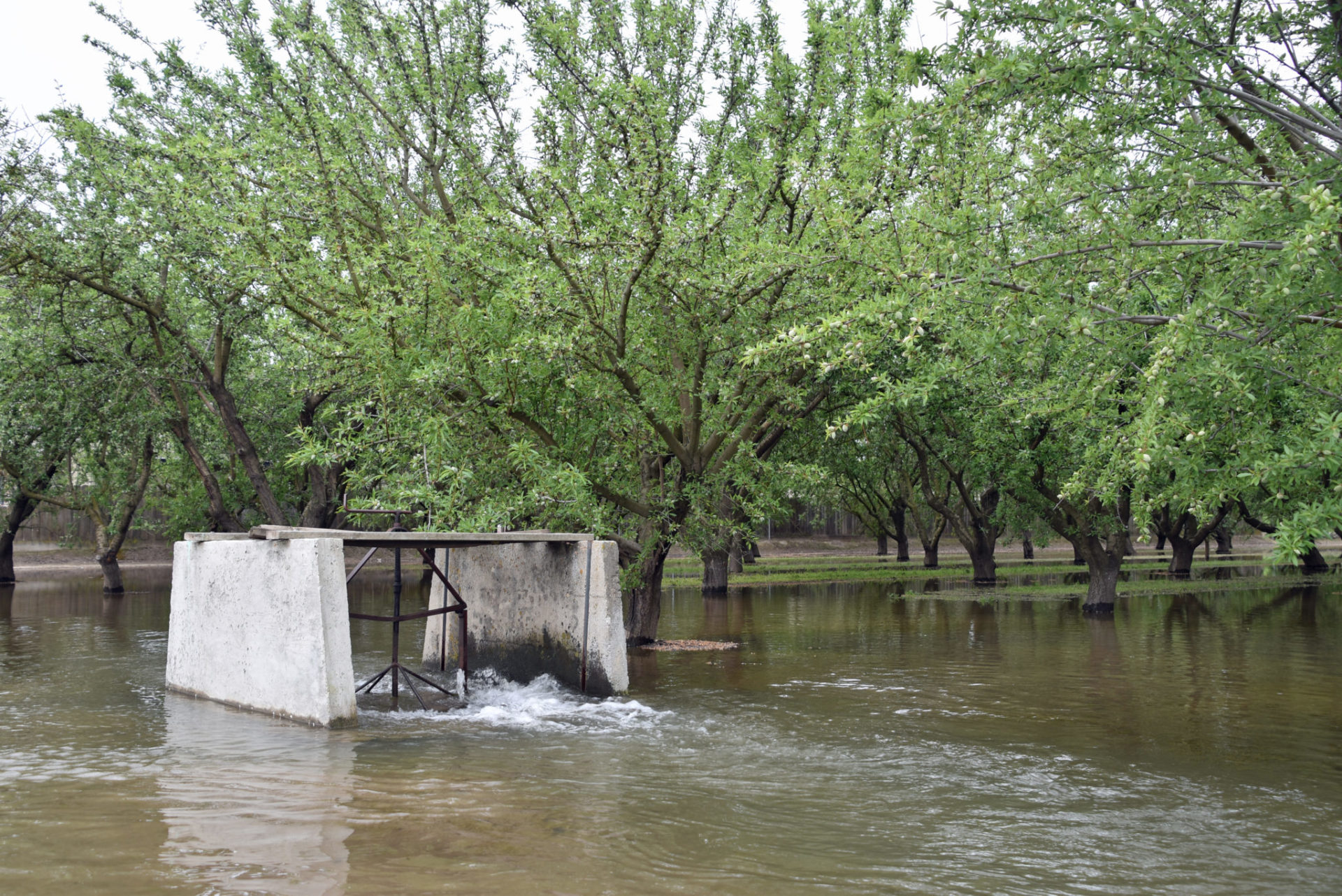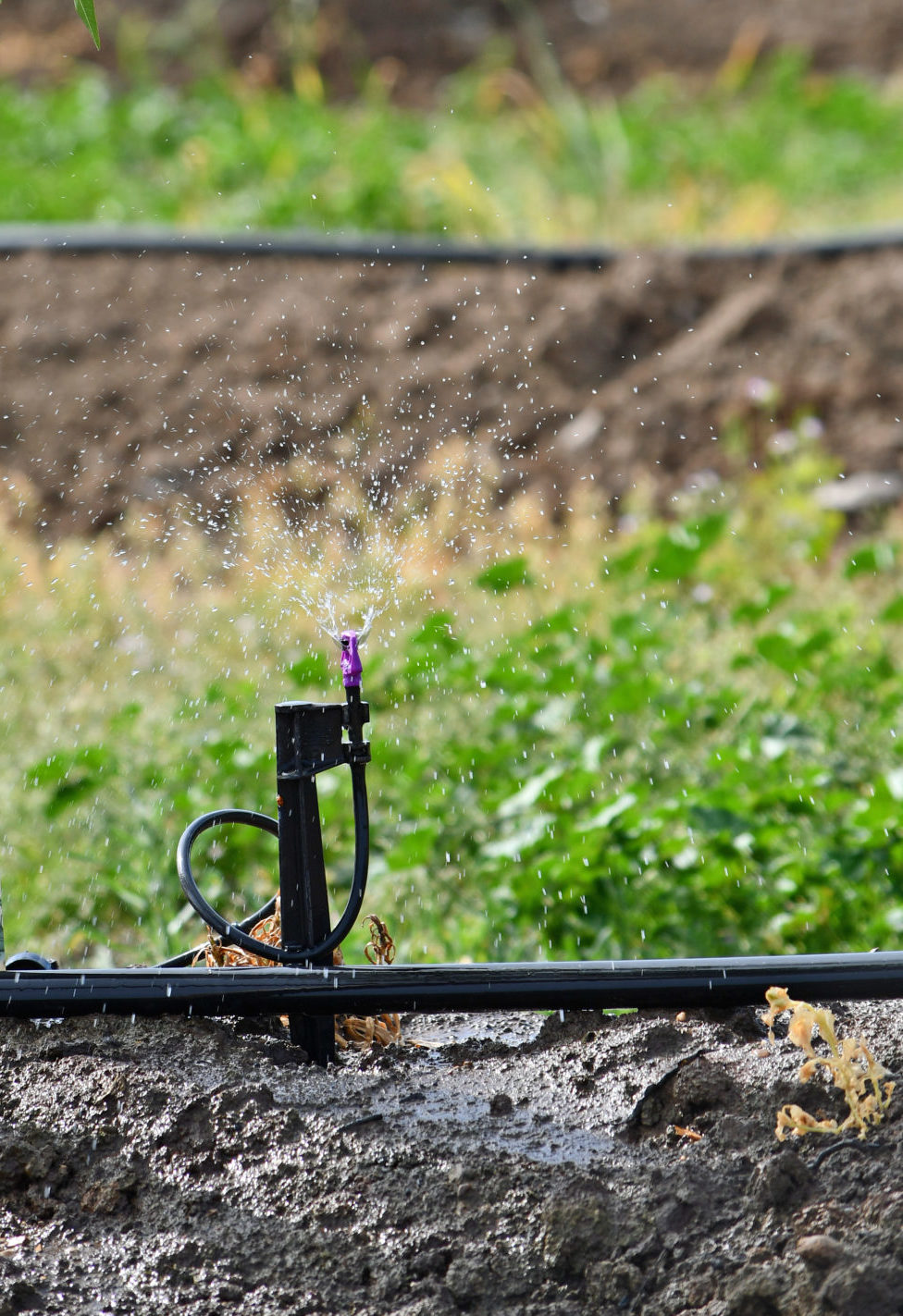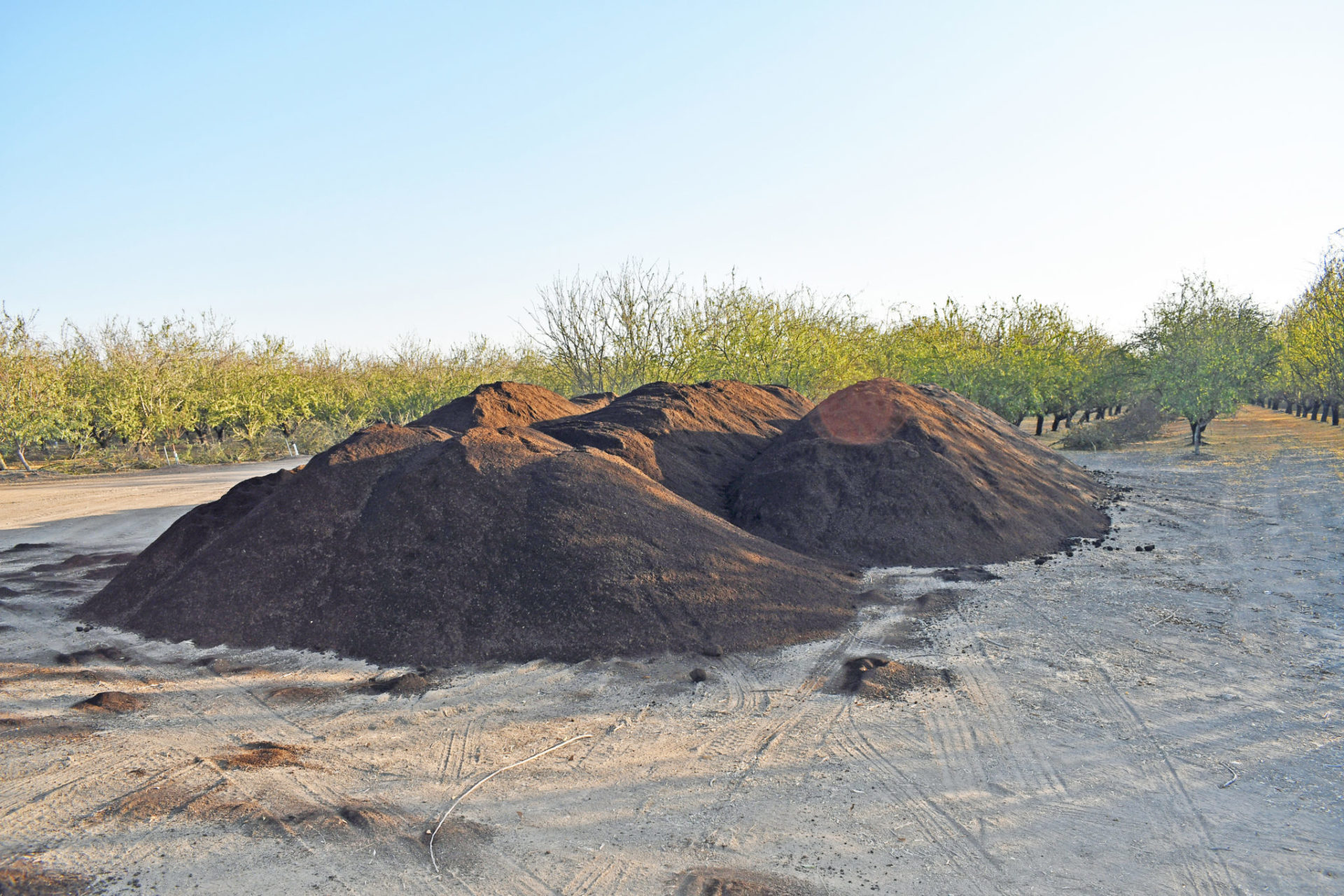
Following the 4R’s of nutrient stewardship – using the right source, at the right rate, at the right time and the right place – is key to ensuring nitrogen is used as efficiently as possible. Irrigation management also comes into play since nitrates are mobile and move with water. As a result, applying the correct amount of water at the correct time is part of the overall nitrogen stewardship equation.
“It’s hard to talk about one without the other,” said Mark McKean, who grows almonds, winegrapes and row crops near Riverdale. “You have to talk about water management when you talk about nitrogen management and vice versa.”
As president of the Kings River Water Quality Coalition, he is acutely aware of the need for agriculture to maximize nitrogen use efficiency and to prevent it from leaching into the groundwater.
Sebastian Saa, senior agricultural research manager for the Almond Board of California, said nitrogen management and irrigation management are connected like siblings.
“Especially when you talk about fertigation—which is the most efficient way to provide nitrogen to the plant—you need to do it well with the fertility plan but also with the irrigation component,” he said.

Right Amount
Even before the season begins, Bill Brush, a certified crop adviser and pest control adviser, works with growers from Red Bluff south to the Grapevine to draft nitrogen management plans. He starts with developing reasonable yield goals.
“If you don’t have a yield goal, you won’t even know how much to put on,” Brush said. “You can always cut back as you move into the season.”
Based on work by Patrick Brown, a UC Davis plant nutrition professor, 1,000 pounds of almond kernels remove 68 pounds N. In walnuts, 1,000 pounds of in-shell nuts remove 15 pounds N, and in pistachios, 1,000 pounds of marketable yield remove 28 pounds N.
Multiply expected yields by the respective nitrogen removal to obtain the amount that will need to be replaced.
Then subtract any nitrogen contributions from irrigation water, soil, compost, or cover crops. The result is the net amount of nitrogen needed for production, assuming trees will absorb all of the applied nitrogen.
But nitrogen use efficiency is never 100 percent. An average target is 70-percent efficiency, which means you’ll need to add another 30 percent.
Soil types will affect overall efficiency, even under the best management practices, Brush said. It’s easier to achieve higher efficiency on heavier textured soils with increased water holding capacities than on lighter soils. At the same time, heavier soils also take longer to dry out after heavy rains, which may influence application timings.
“If you have poor soil conditions and you’re pushing a lot of nitrogen through flood irrigation, your efficiency will go down,” said Brush, who also grows walnuts, almonds and pecans west of Modesto.
Right Time
Application timing also is critical. Over the years, Brown and his colleagues have developed budgets for all three nut crops that show optimal timings that coincide with the tree’s nitrogen demand curve.
With all three, nitrogen demand is small early in the season. When the trees break dormancy and begin vegetative growth, they initially draw from nitrogen stored from the previous year in woody tissue. As they move into reproduction that involves shell hardening, kernel or nut fill, and early hull split, demand peaks.
Mid-season leaf tissue samples can offer a nutritional report card for your trees. Both the April Early Season Program for almonds and the May ESP for pistachios developed by Brown predict summer N tissue values. Late spring also provides enough time to adjust fertility regimes to impact the current crop.
Brown and UC colleagues are working to develop an early season tissue sampling program for walnuts as the current July timing is too late to make corrections during the current season.
Right Source
The nitrogen source goes hand in hand with irrigation. With drip irrigation or microsprinklers, nitrogen can be injected into the system. Products such as CAN 17 and UN 32 work well because they readily move with the water, Brush said. Because of that, they also have a high leaching potential.
In flood irrigation or solid set sprinklers, growers should apply nitrogen fertilizer along the tree rows and not as a broadcast. During summer heat, ammonium and urea can volatilize into the atmosphere if they aren’t incorporated through irrigation or disking within about a day of application.

Right Place
If drip or micro-irrigation is used to deliver the proper amount of water to the roots, it can be a highly efficient way to also deliver nitrogen, Saa said. Common sense should tell you to inject the nitrogen during the second half of the irrigation set.
“The active roots are in the first 2 feet or so. Especially if you’re doing a very long irrigation event, you really want to target (the nitrogen injection) to the last half of the irrigation,” he said. “You want the water to stay in the first 2 feet.”
For walnuts, shoot for the top 2 to 3 feet. Using flood irrigation to move the nitrogen into the root zone takes more creativity and looking at nitrogen forms that don’t move as readily in the soil, Brush said.
Also factoring into the equation are soil type and irrigation supply – how often the district delivers water.
“You tailor a program to your farming needs, and it goes back to getting a plan together,” Brush said.
When the 4Rs are followed with proper irrigation management and with the right orchard situations, Bush said growers may top the 70-percent average nitrogen use efficiency.
“I help my clients go up to 90-percent efficiency,” he said. “That’s taking all of the 4Rs into consideration – the right type of N at the right time in the right amount in the right place. If you do all of those things, you can increase your efficiency. Tissue tests will tell you how much is getting in, but none of those tell you what’s getting by. That’s what we’re trying to go after. We get our guys squeezed down pretty lean on nitrogen.”

Level of Adoption
To gauge adoption of several nitrogen and irrigation management practices, a UC Davis research team mailed surveys to about 5,000 members of three water quality coalitions: Colusa-Glenn Subwatershed Program, San Joaquin County and Delta Water Quality Coalition, and East San Joaquin Water Quality Coalition in 2018.
Leading the study were Mark N. Lubell, Jessica M. Rudnick, Sat Darshan S. Khalsa and Patrick H. Brown.
The survey asked participants whether they used 11 different soil, fertilizer and irrigation practices. It also asked them for the reasons they might not use a particular practice.
The data can be used to target outreach and educational programs around nitrogen and irrigation management practices with the lowest adoption rates, said Khalsa, assistant project scientist. It also can help direct future research projects.
Split nitrogen applications, leaf tissue testing and soil testing ranked highest among the practices, with moisture probe use, irrigation water N testing and ET irrigation scheduling placing in the middle. At the other end with the lowest adoption rates were cover crops, pressure bombs and GPS-guided variable-rate application.
Khalsa said he wasn’t surprised that leaf tissue sampling ranked near the top. “It’s a way for you to verify that the practices you’re putting in place are leading to a crop with sufficient nutrition,” he said. “It’s directly related to productivity.”

There also are years of data to back nitrogen thresholds for mid-season leaf tissue sampling for several crops, including almonds, pistachios and walnuts. But less information is available about how nitrogen levels in water and residual soil nitrogen affect tree performance. Research being funded through the California Department of Food and Agriculture’s Fertilizer Research and Education Program should help answer that.
“There’s definitely less research in permanent cropping systems that will tell you this is what you need to do now,” Khalsa said. “With nitrogen in the water, there are so many biochemical steps to get to your bottom line. There’s information about how much to fertilize, but it hasn’t been done in a comprehensive way. We’ve looked at the efficiency of water use, but it hasn’t reached a point where we have unified nitrogen studies with irrigation studies hand in hand.”
The UC team is currently conducting a similar survey among coalition members in parts of Kern, Kings, Tulare and Fresno counties.
One question they will ask is: “When do you think irrigation influences nitrogen management the most? During fertigation, after fertigation or year-round?”










